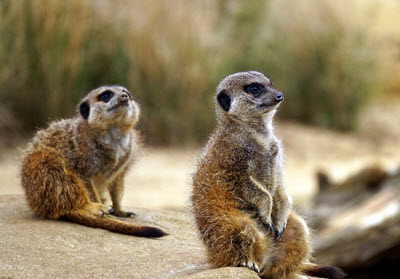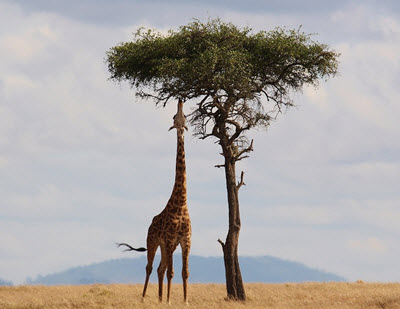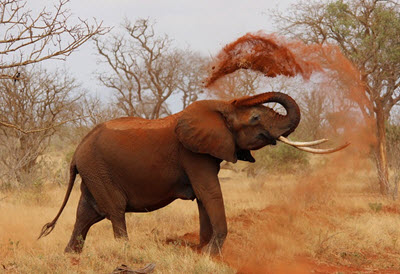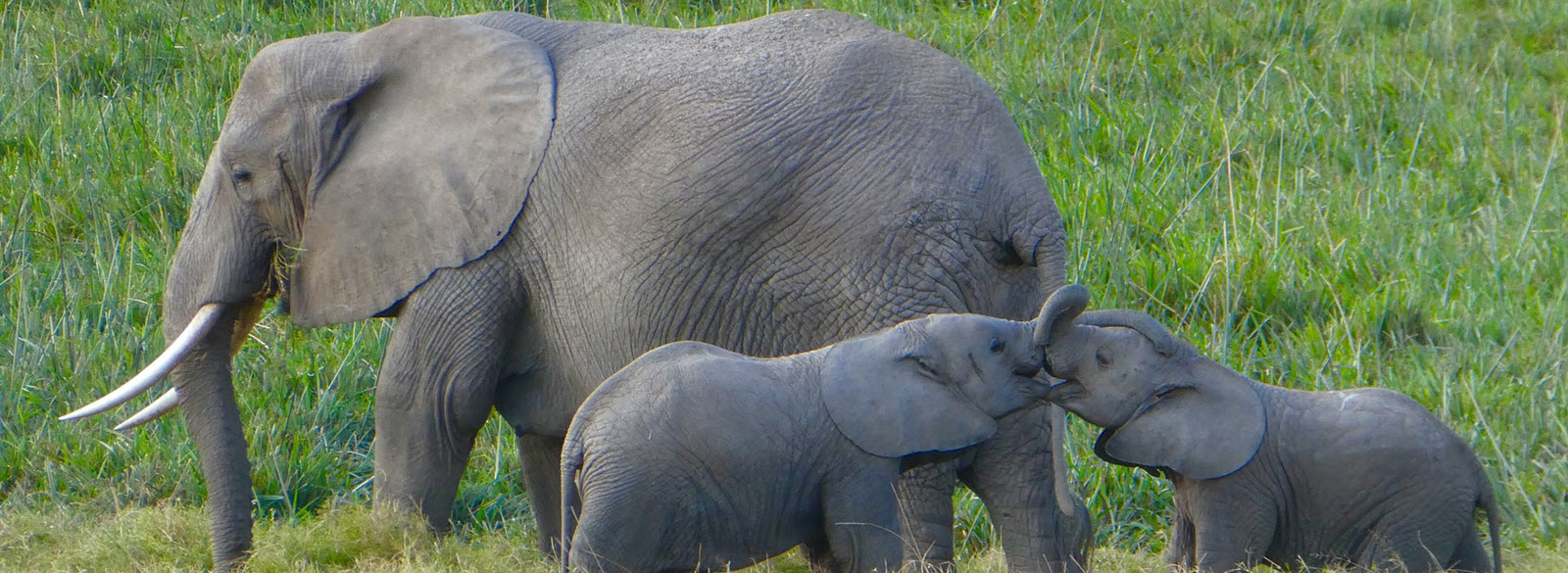On this page:
 The new Mombasa-Nairobi standard-gauge railway in Kenya passes by the Tsavo National Park and it is sometimes possible to spot wildlife from the train windows. The Tsavo National Park is divided into two sides – the east one and the west one – by the transportation corridor utilized by the A109 highway and the old metre-gauge Uganda Railway. As both of them are at ground level, collisions with wildlife do occur. When the Mombasa-Nairobi standard-gauge railway (SGR) was built in the mid-2010, viaducts and embankments were created to keep the SGR above ground level and thus prevent collisions, as the wildlife can pass underneath.
The new Mombasa-Nairobi standard-gauge railway in Kenya passes by the Tsavo National Park and it is sometimes possible to spot wildlife from the train windows. The Tsavo National Park is divided into two sides – the east one and the west one – by the transportation corridor utilized by the A109 highway and the old metre-gauge Uganda Railway. As both of them are at ground level, collisions with wildlife do occur. When the Mombasa-Nairobi standard-gauge railway (SGR) was built in the mid-2010, viaducts and embankments were created to keep the SGR above ground level and thus prevent collisions, as the wildlife can pass underneath.
Short facts about the Tsavo East National Park
| Coordinates | 2°46′43″S 38°46′18″E |
| Area | 13,747 km2 |
| Established | 1948 |
| Governing body | Kenya Wildlife Service |
Geography
 The Tsavo East National Park is located in a semi-arid area known as the Taru Desert, and most of the park consists of semi-arid grassland and savanna.
The Tsavo East National Park is located in a semi-arid area known as the Taru Desert, and most of the park consists of semi-arid grassland and savanna.
With its 13,747 square kilometers area, it is one of the largest national parks in Kenya, and it is also one of the oldest, established just a few years after the end of World War II. The park is a part of an even larger wildlife area, comprised of the Tsavo East and Tsavo West National Parks, the Chyulu Hills National Park, and the Mokomazi Game Reserve (which is on the other side of the Tanzanian border).
Rivers
- The park is named after the Tsavo River, which runs from west to east through the park, and converges with the Athi River to form the Galana River. The Lugard Falls is a series of powerful whitewater rapids on the Galanda River.
- In 1952, the Aruba Dam was built across the Voi River, and the reservoir soon became populated by local wildlife, including water birds.
The Mudanda Rock
The Mudanda Rock is a tall inselberg of stratified rock in the park, from which visitors have a great view over the surroundings. The rock acts as a water catchment, creating a natural dam below. During the dry season, this dam is very important for the wildlife, who come here to quench their thirst. Large herds of elephants arriving to drink are not unusual.
Yatta Plateau
The 290 km long Yatta Plateau was formed by lava erupting from the Ol Doinyo Sabuk Mountain. The plateau runs along the western boundary of the park, above the Athi River.
Fauna
 A very wide range of animals lives in the Tsavo East National Park, including the African Big Five. This park is home to lions, leopards, African Savanna elephants, Black rhinoceroses, and Cape buffalo. The Tsavo lions are notable for the fact that adult males often lack manes.
A very wide range of animals lives in the Tsavo East National Park, including the African Big Five. This park is home to lions, leopards, African Savanna elephants, Black rhinoceroses, and Cape buffalo. The Tsavo lions are notable for the fact that adult males often lack manes.
Canines
The park is home to canines such as the African wild dog, Black-backed jackal and Side-striped jackal. Several members of the hyena family live here too, such as Aardwolf, Spotted hyena, and Striped hyena.
Cats
In addition to the lions, many other cats live here too, such as Leopard, Cheetah, Caracal, Serval, African wildcat, Large-spotted Genet, and Small-spotted genet.
Primates
Examples of primates that inhabit the park are the Yellow baboon, Vervet monkey, Syke’s monkey, Galago, and Greater galago.
Bovidae
The park is home to wide range of bovine species, such as Giraffe, Plains zebra, Grevy’s zebra, Impala, Gazelle, Coke’s hartebeest, Dik-dik, Suni, Waterbuck, Fringe-eared oryx, Genernuk, Klipspringer, and several species of Duiker.
Mongoose
Several different mongoose species live in the park. You can find Egyptian mongoose, Banded mongoose, Marsh Mongoose, Dwarf mongoose, White-tailed Mongoose, and Slender mongoose here.
Birds
Over 500 species of bird have been reported in the park, including water birds such as Sacred ibis, cranes and herons. The kingfishers also tend to stay near the water.
Other exampes of birds that inhabit this park are the ostriches, the kestrels (a type of falcon), the weaver birds, and the secretary birds.
Others
Here are just a few examples of other interesting animals that live in the Tsavo Eastern National Park:
- Ground pangolin
- Honeybadger
- Crested porcupine
- Naked mole rate
- Clawless Otter
- Warthog
Early history
From the Early Stone Age and Middle Stone Age, only a few archaeological sites are recorded here. The findings from the Late Stone Age are much more plentiful and indicate that humans were thriving along the Galana River from approximately 6,000 years ago. They fished and hunted, but also kept domesticated animals.
The Tsavo inhabitants traded with Swahili merchants from at least 700 AD, possibly earlier. The trading involved items such as ivory and catskins from Tsavo and cowry shells and beads from the Swahili coast.
